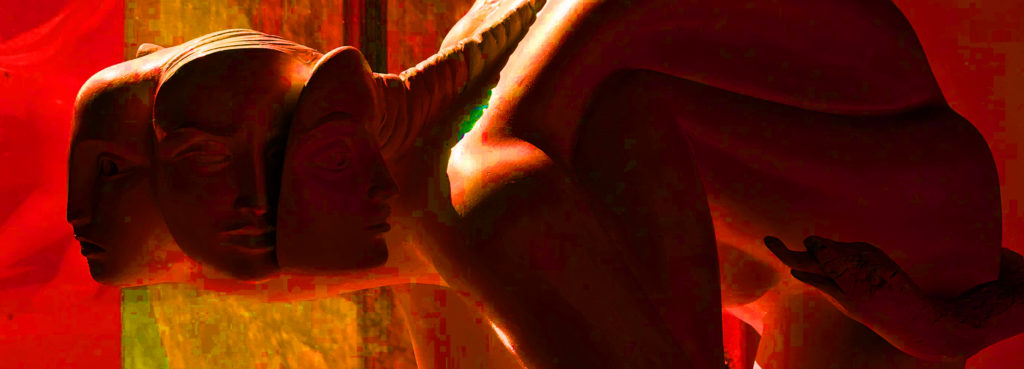The most primitive part of the forebrain, which MacLean referred to as the “reptile brain,” includes structures that, according to him, provided the neural substrates for species-typical ritual or instinctive behavior, and basic homeostatic functions like breathing. Anatomically, you can think of the reptile brain as the brain stem and the associated foundational structures. Built on top of the reptile brain is the second component, which MacLean called the “limbic system”—a number of interconnected neural regions that support emotional responses from sexual to aggressive. According to MacLean, the limbic system evolved with the first mammals, so he referred to it as “paleomammalian.” The third component, called the “neocortex,” is found only in primates, according to MacLean. The neocortex, which surrounds the limbic system, is where the neural substrates for language, abstraction, planning, and other executive functions reside.
There are a number of problems with this “triune brain” hypothesis. For example, parts of the reptile brain are found in all vertebrates, including fishes; parts of the limbic system occur in reptiles; and the neocortex is not confined to primates. But by far the biggest problem with the triune brain framework is that it begins the story of brain evolution far from the beginning. Recent evo-devo research has revealed that not only our brains, but our vaunted neocortex, share homologies with the first brained creatures, called flatworms, with whom we share a common ancestor that existed prior to the Cambrian explosion over 500 mya. A lot happened in brain evolution between flatworms and fishes, and much more between fishes and reptiles. Our brains, perhaps more than any of our other organs, reflect the conservative tinkering nature of the evolutionary process.
Actually, we can trace brain tinkering to a prebrain stage, when the nervous system consisted solely of a network of a few neurons, such as we find today in jellyfish. Those neurons remained essentially the same, even as neural nets were transformed into complex brains like ours, and not because they are particularly efficient. The neurons we inherited from jellyfish are quite leaky with respect to the electrical charges they conduct. These leaky neurons were fine for jellyfish because jellyfish require only a few neurons to do what jellyfish need to do. For us and countless other more complex creatures, they are quite suboptimal, and the myelination of some axons is a make-do evolutionary response to ameliorate the problem.
If our neurons were more efficient electrical conductors, we wouldn’t require such big brains. And if we didn’t have such big brains, the neurons in our cortex wouldn’t have to make such perilous journeys from their place of origin to their final resting place, leaving us vulnerable to all manner of neurological disorders. The fact that even the neurons on the surface of our brain must migrate from generative zones deep in the brain is also an inefficient homology. Any decent electrical engineer would produce neurons closer to where they ultimately need to be.
 Much of our brain wiring is also inefficient, because it was not designed from the ground up; it is, rather, a patchwork of repurposed elements and jury-rigged add-ons, what Gary Marcus has so aptly labeled “kluges.” These kluges extend to the bits of the brain we hold most dear, such as the circuits involved in language. One of the main organizing principles of the brain is called “neural reuse,” in which neural circuits that evolved to serve one function are recycled, repurposed, and redeployed for completely different ends during the course of evolution. Brains designed by an omnipotent God should be reverse engineerable; brains that are products of evolution, not so much.
Much of our brain wiring is also inefficient, because it was not designed from the ground up; it is, rather, a patchwork of repurposed elements and jury-rigged add-ons, what Gary Marcus has so aptly labeled “kluges.” These kluges extend to the bits of the brain we hold most dear, such as the circuits involved in language. One of the main organizing principles of the brain is called “neural reuse,” in which neural circuits that evolved to serve one function are recycled, repurposed, and redeployed for completely different ends during the course of evolution. Brains designed by an omnipotent God should be reverse engineerable; brains that are products of evolution, not so much.
But there is another factor that greatly complicates the evaluation of any proposed human cognitive adaptations: the huge role that culture plays in our cognitive lives. The self-domestication hypothesis purports adaptations that are biological, the product of natural selection. But culture plays a formative role in the development of all human cognitive capacities. Given the prodigious cultural forces that influence human cognitive development, it is no easy task to distinguish a purely biologically adaptive (as opposed to culturally adaptive) component in the development of complex human cognitive and emotional traits. Usually such attempts simply involve a search for “cultural universals,” which are supposed to implicate natural selection.8 But this inference is far from straightforward. Cultural universals can be universal for reasons other than natural selection. Conversely, some of the best evidence for active selection in humans comes from traits, such as lactose intolerance, that are not culturally universal.
For all of these reasons, many questions about human cognitive evolution may remain forever unanswered, by the standards of mainstream evolutionary biology, especially those concerning what past selection was for. We need to acknowledge at the outset that the self-domestication hypothesis may fall into this category.
This counsel of humility, given the obstacles just described, goes completely unheeded by many, especially those prone to making bold claims about human nature based on the slightest evidence that a trait is adaptive. From human ethology to sociobiology to evolutionary psychology, there has been an overwhelming tendency to blithely ignore the evidential standards of mainstream evolutionary biology. Evolutionary psychologists are in many ways the worst offenders; the assumptions that distinguish evolutionary psychology from its predecessors provide quite effective insulation from empirical assault.In lieu of the biological information required to apply the comparative method, evolutionary psychologists adopt a first-principles approach, in which they make assumptions about the human environment, usually an unspecified period of the Pleistocene, and then infer, through a process called reverse engineering, what natural selection “must have done to the human mind/brain.“
![[art]by[odo]](https://artbyodo.net/wordpress/wp-content/uploads/2011/03/cropped-Header.jpg)







